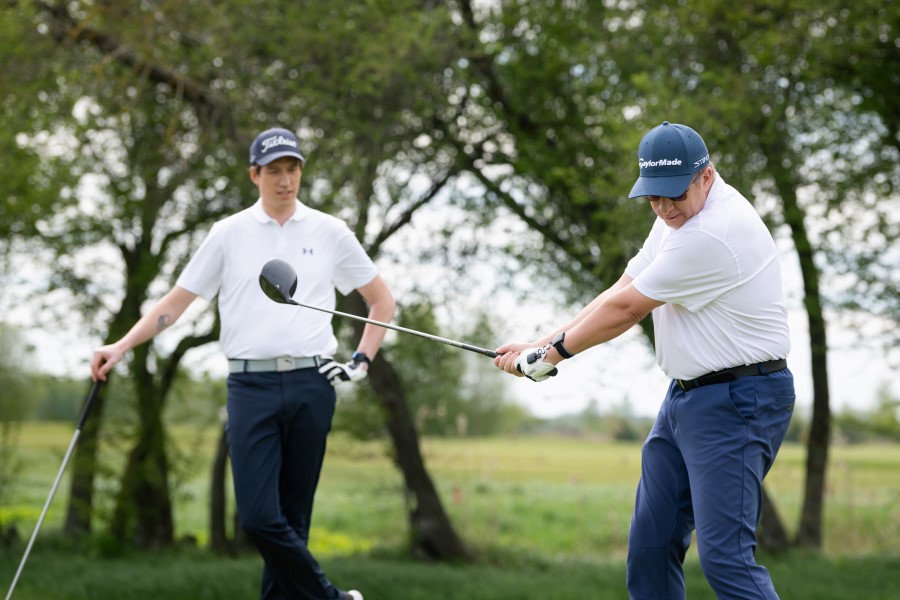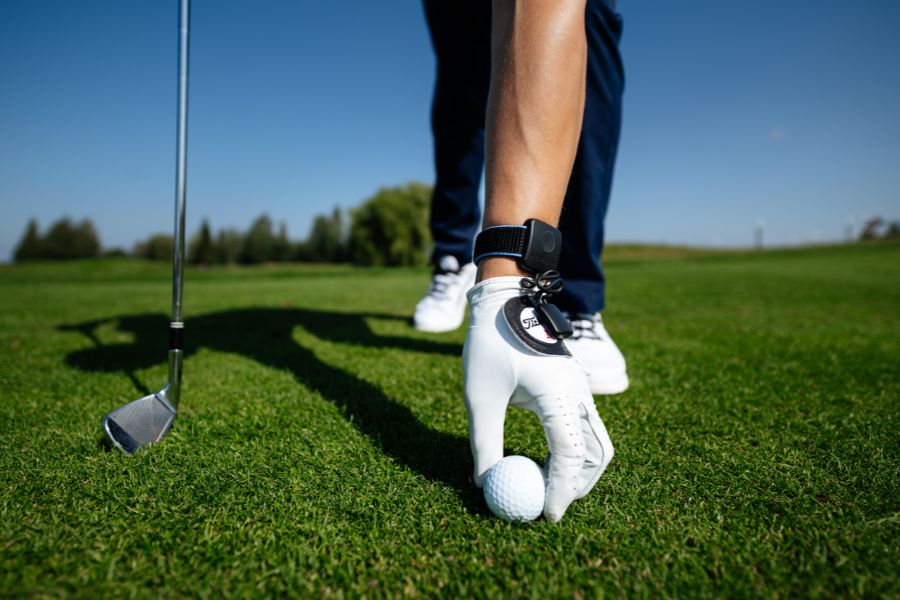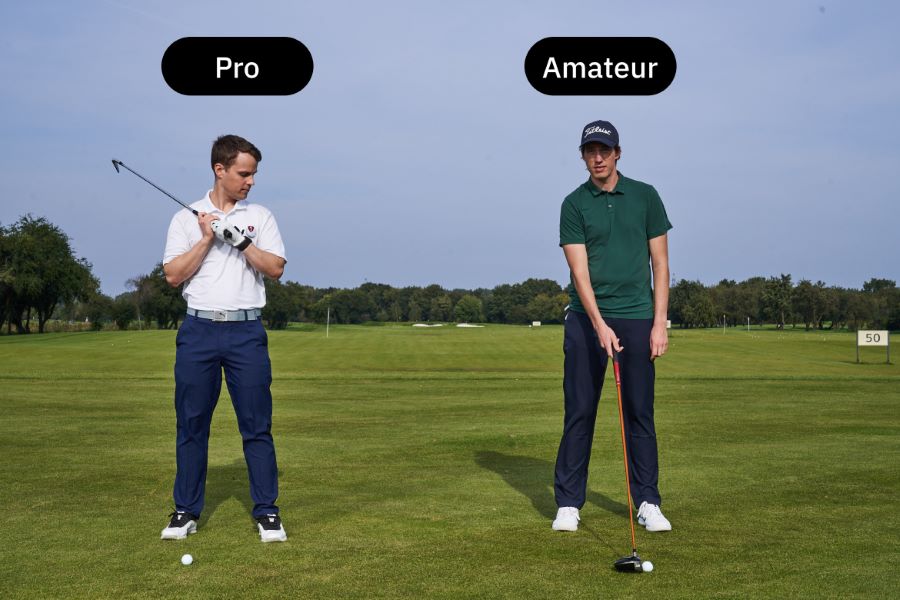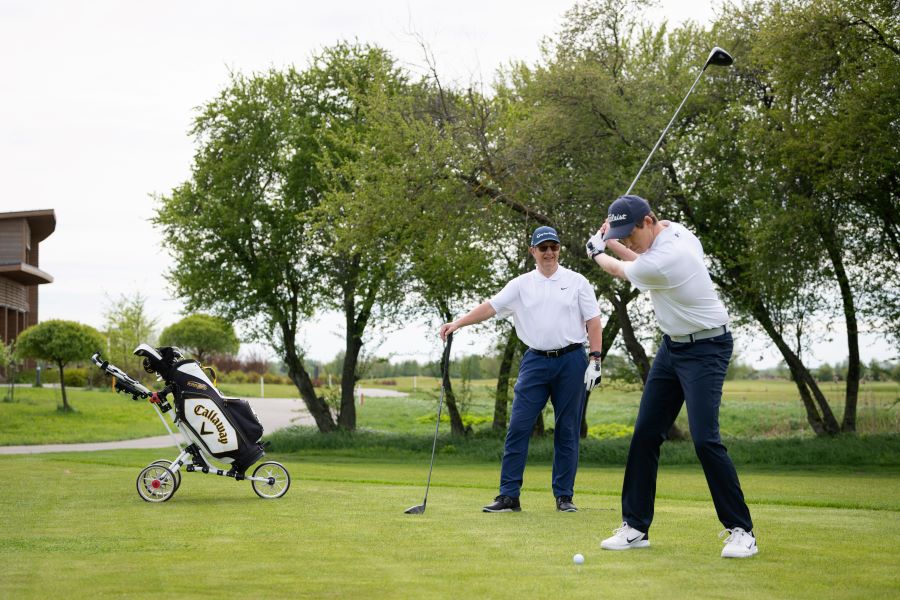10 Quick Tips to Get Out of a Golf Slump (Get Back on Track Fast)
One bad round of golf is not a slump, but when it continues round after round, it’s time to do something about it.
Every golfer knows slumps happen. One day, you’re playing your best golf, and suddenly, you’re struggling to find fairways and greens.
Thankfully, there are proven strategies for quickly getting back on track. Here are 10 actionable tips to help you effectively break out of a golf slump.
How to Get Out of a Golf Slump (Key Takeaways)
If you don’t have time to work through all of these tips right now, here are the most important ones to walk away with.
- Conduct a comprehensive assessment of your current golf game.
- Prioritize improving your impact position, particularly wrist mechanics.
- Use structured, measurable drills with HackMotion for precise feedback.
- Balance practice with strategic breaks to refresh mentally.
- Leverage golf technology, like HackMotion, even when practicing without balls.
Contents
- The 10 Tips to Get Out of a Golf Slump
- 1. Perform a Thorough Self-Assessment
- 2. Prioritize Your Impact Position (Especially Wrist Mechanics)
- 3. Structured Impact-Focused Drills
- 4. Strategic Breaks for Learning and Mental Reset
- 5. Engage a Professional Golf Coach
- 6. Return to Your Fundamentals
- 7. Prioritize Your Short Game and Putting
- 8. Boost Your Physical Fitness and Flexibility
- 9. Spend More Time Doing Drills and Less Time Just Hitting Balls on the Range
- 10. Leverage Golf Technology
- Final Thoughts
The 10 Tips to Get Out of a Golf Slump
1. Perform a Thorough Self-Assessment
A golf slump often stems from unnoticed issues creeping into your game. Start with a detailed, honest self-assessment:
- Fairways Hit: Track the direction and consistency.
- Greens in Regulation: Note misses and reasons behind them.
- Short Game Up and Downs: Evaluate your success rate from around the green.
- Putts per Round: Aim for under 35 putts; identify patterns in misses.
- Penalty Strokes: Identify common scenarios leading to penalties.
- Quality of Strike: Rate each shot from 1 to 10 for feedback.
Another great way to see if you have undiagnosed issues in your golf game is to use the HackMotion diagnostic tools in the app. They will identify issues with your wrist hinge, flexion, and extension and explain why your impact position is likely off.
2. Prioritize Your Impact Position (Especially Wrist Mechanics)
A consistent and solid impact position dramatically improves performance. Proper wrist mechanics play a pivotal role here:
- Maintain a flat or slightly bowed lead wrist at impact to compress the golf ball effectively.
- HackMotion’s real-time feedback shows you exactly what your wrists are doing throughout your swing, helping you pinpoint and correct problems instantly.
3. Structured Impact-Focused Drills
When your golf game starts to struggle, you need to focus on what is happening at impact to cause these issues.
Take some time at the range to structure and focus your practice on the impact position and the issues associated with it.
The HackMotion Release Drill is great for isolating the impact position and determining what the specific issues are:
Perfect Your Release with HackMotion
Fine-tune your release for consistent contact. Start with a short swing to master control before adding power.
HackMotion Release Drill – Step by Step
- Set Up: Address the ball with a shorter swing in mind. Navigate to the HackMotion release drill in the app.
- Club Parallel to Ground (P7) to Impact: Swing from club parallel in the downswing into impact.
- Hands Forward: Aim to keep your hands slightly ahead of the ball at impact.
- Check Wrist Angles: Use HackMotion to confirm that your wrist angle is in the correct “in range” zone.
- Perform at least 10 reps before you pick up speed a little with the Dynamic Transition Drill.
4. Strategic Breaks for Learning and Mental Reset
Taking brief breaks to focus on education rather than constant hitting can refresh your mental approach.
It’s absolutely possible to fill your brain with too much information, which can make it difficult to play great golf.
Spend some time studying swing mechanics and wrist action. Practice your swing slowly while wearing HackMotion sensors, analyzing wrist movement without hitting balls. Use this period to deeply understand your swing mechanics, preparing you for productive physical practice.
You may find a new focus that takes your golf game out of the slump.
5. Engage a Professional Golf Coach
Even a short session with a professional golf coach can provide powerful insights.
- Coaches quickly identify swing faults, particularly around the crucial impact zone.
- Regular lessons keep you focused and accountable, significantly reducing slump durations.
- Wear your HackMotion while working with your coach to examine the data and diagnose issues your coach may have trouble seeing.
6. Return to Your Fundamentals
Simple fundamentals like grip, posture, and alignment frequently cause issues during a slump. As much as the basics can get boring, they could be exactly what is causing you the issues in your golf game.
Make sure your stance width, posture, and grip position are all correct to give yourself the best shot at a great swing.
7. Prioritize Your Short Game and Putting
If the entire game is giving you a hard time, maybe try focusing on one small part. Chip and pitch shots are miniature versions of the full swing.
Spend some time focusing on drills that help you hit clean pitches and chip shots, and practice different scenarios and lies around the green.
One great way to work on simplifying your swing and getting out of a slump is to take a pitching wedge or even a 9-iron and hit some simple pitches with minimal wrist action, feet close together, and very little body movement.
Use these to get the ball close and see if it starts to bring the rest of the game back into focus, making it easier for you.
If your chipping and pitching are still a strong point, consider practicing putting with your HackMotion sensor on and checking for unnecessary movement in your stroke.
8. Boost Your Physical Fitness and Flexibility
Have you ever thought that your golf slump could be caused by something outside of your golf swing?
Enhancing physical condition directly impacts your golf swing effectiveness. Incorporate regular golf-specific fitness and flexibility training.
Better physical fitness and flexibility translate to improved swing mechanics and consistency. One of the most important benefits players see is an increase in stamina as they approach the 18th hole.
9. Spend More Time Doing Drills and Less Time Just Hitting Balls on the Range
The practice range can sometimes amplify frustration. In addition, many golfers don’t know how to practice on the driving range the right way.
The first step here is to use drills on the driving range and then incorporate some playing time into the mix.
Here are some resources for great drills you can work on at the driving range, you should have at least four or five to pull from when you get there:
- Effective Drills to Use at the Driving Range
- Drills to Improve Wrist Mechanics and Clubface Control
- Alignment Stick Drills Every Golfer Should Know
- Proven Drills for Better Ball Striking
- Proven Drills to Perfect Your Backswing
10. Leverage Golf Technology
Golf technology has improved and you can now use it to track your practice, improve things like tempo, swing path and wrist position at impact.
Regularly utilizing technology like HackMotion in your practice routine helps you see where changes (both positive and negative) may be occurring.
You’ll also have instant feedback to make necessary adjustments to your practice sessions. HackMotion allows for analysis without even hitting golf balls, so you can work on your swing anytime and anywhere
Final Thoughts
Breaking out of a golf slump requires targeted strategies and objective feedback, particularly focusing on impact position.
Incorporate structured drills, use HackMotion technology to pinpoint issues, and consider strategic breaks for mental clarity.
Combine these approaches with professional coaching and a return to fundamentals, and you’ll quickly find your path back to consistent, enjoyable golf.















